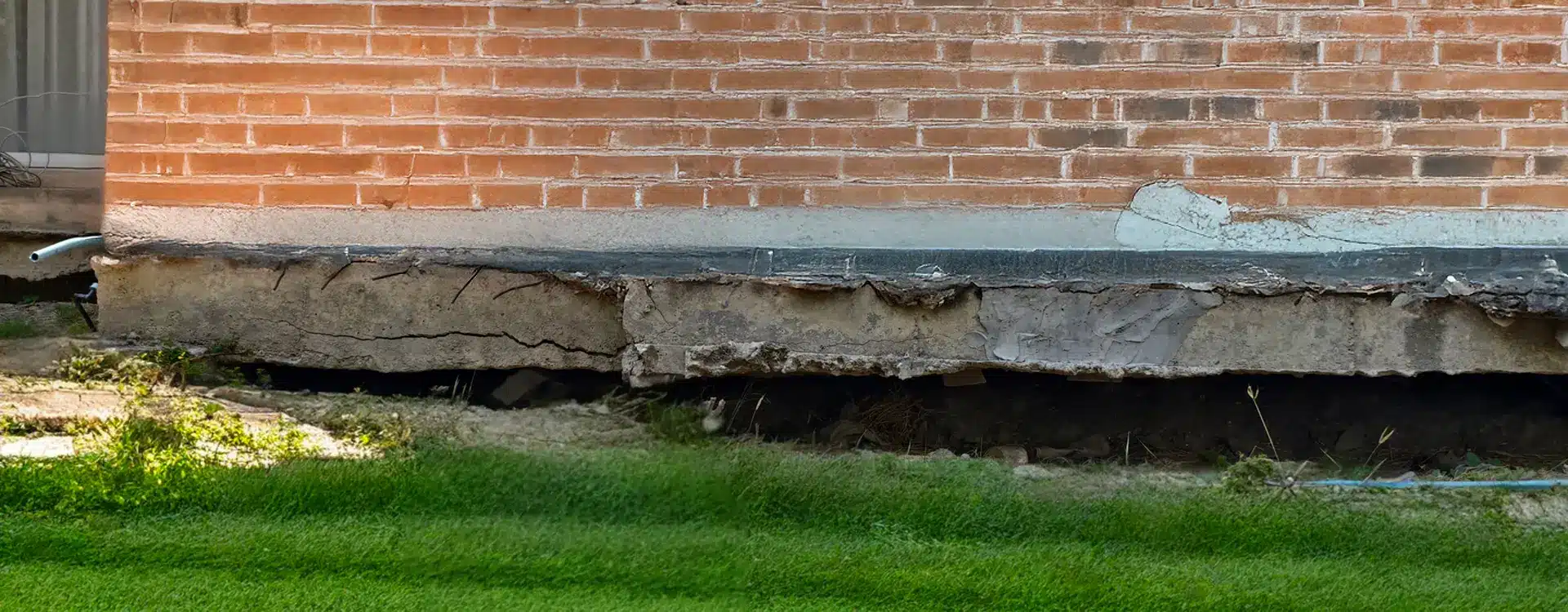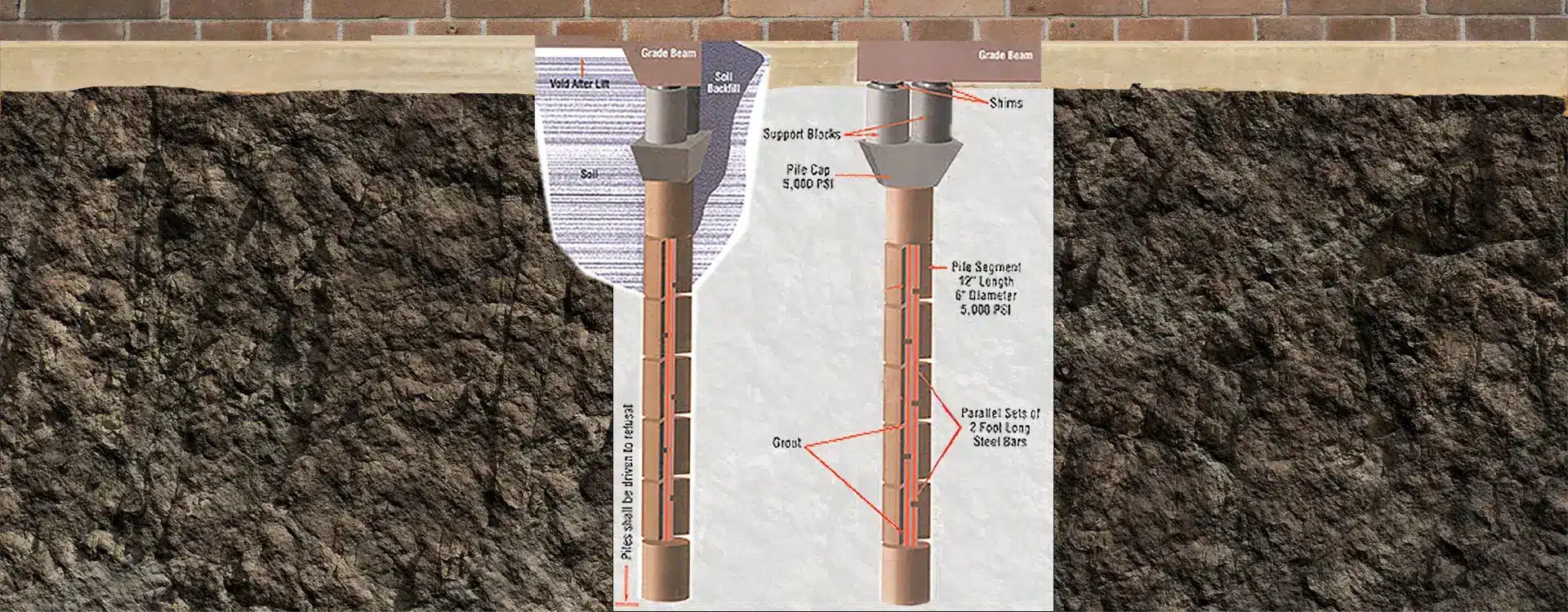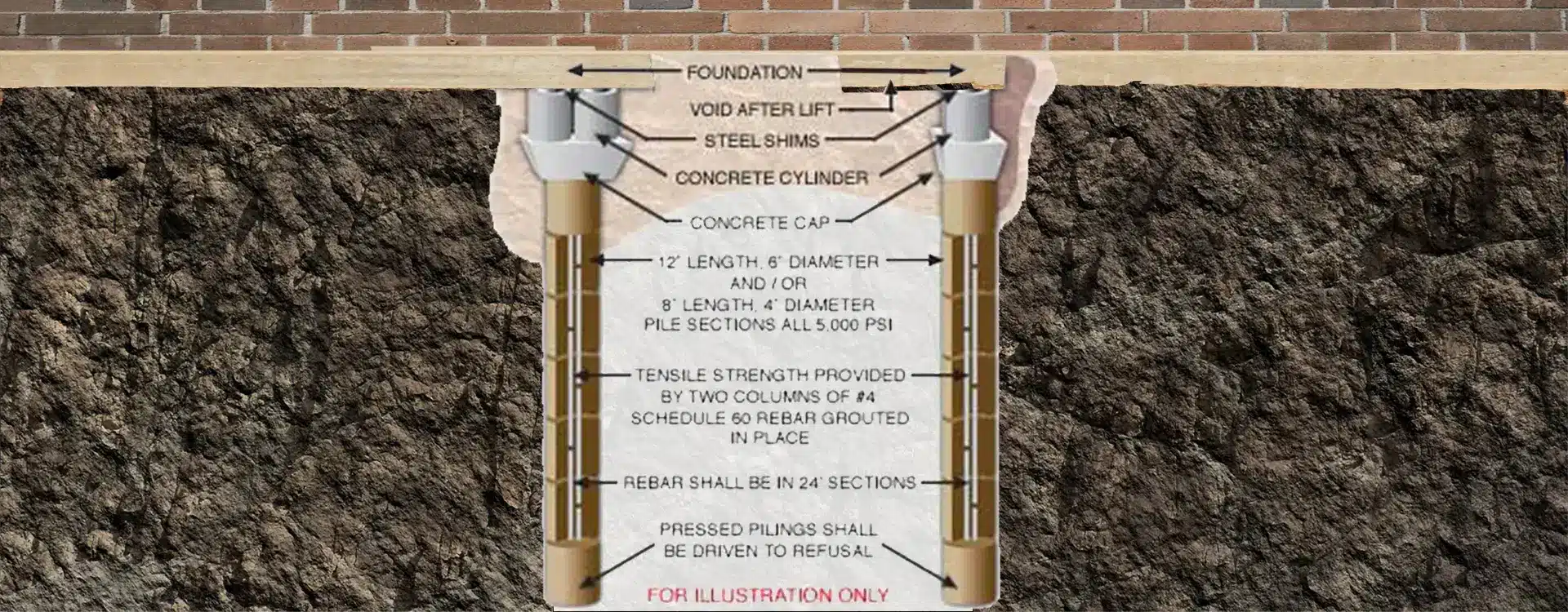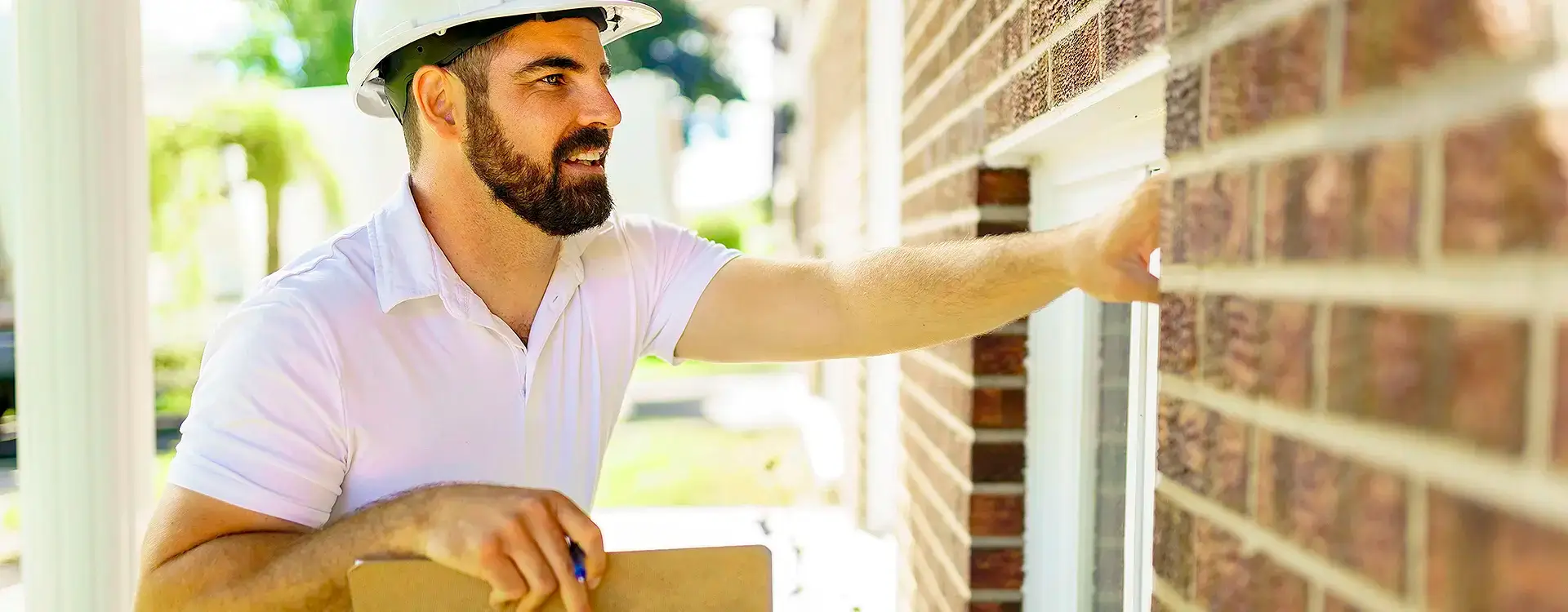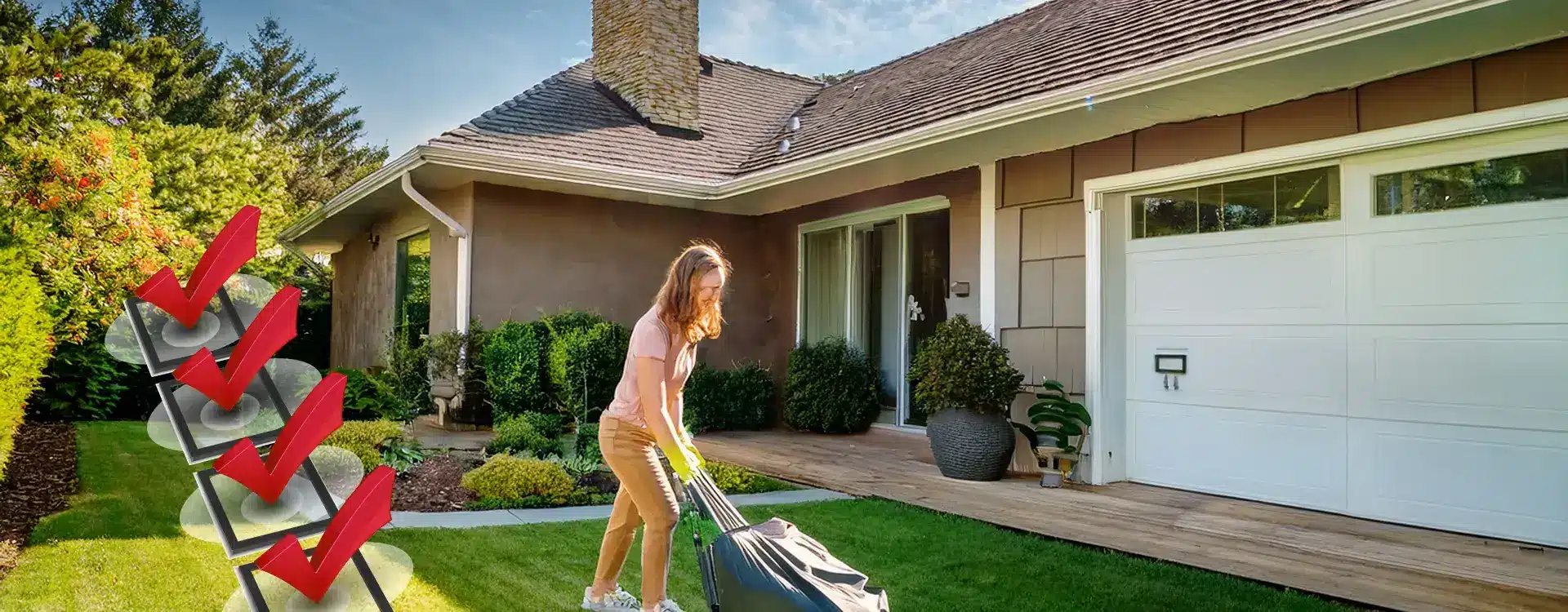How do you Apply Gravel and river Rocks Around Your House? We believe gravel and river rocks are the best ground covers for foundations. They will protect your home’s foundation. Applying gravel and river rocks around your house can improve your landscaping. It will enhance its looks and function. It will also keep the soil around your foundation moist. Here’s a step-by-step guide to help you:
Materials Needed:
- Gravel or river rocks
- Gardening gloves
- Shovel
- Rake
- Wheelbarrow (optional)
- Landscape fabric
- Edging material (optional)
- Spray paint or garden hose (for marking)
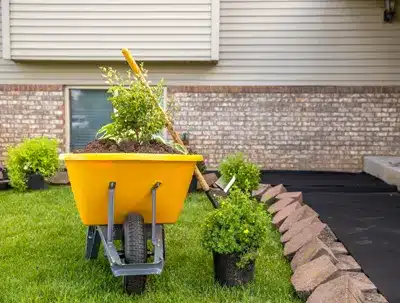
How do you Apply Gravel and river Rocks Around Your House?
The Steps:
- Plan and Mark the Area:
Decide where you want to apply the gravel or river rocks. Outline the area with spray paint or a garden hose. - Prepare the Area:
Remove any existing grass, weeds, or debris from the marked area. Dig to a 2-3 inches depth to create a base for the gravel or river rocks. - Install Edging (Optional):
Install edging material around the area’s perimeter. It will contain gravel or rocks, but other materials you can use include plastic, metal, wood, or stone. - Lay Landscape Fabric:
Roll landscape fabric out and cover the entire area. This helps prevent weed growth. Cut the fabric to fit the region’s shape and secure it in place with landscape fabric staples. - Add a Base Layer (Optional):
To improve drainage and stability, add a base layer of crushed stone or smaller gravel. Then, add decorative gravel or river rocks. Spread and even the base layer using a rake. - Apply the Gravel or River Rocks:
Spread the gravel or river rocks over the prepared area using a shovel, wheelbarrow, or bucket. Given their varying sizes, plan for a 2 to 3-inch gravel depth and a little deeper for river rocks. - Distribute Even Layers:
Use a rake to evenly distribute the gravel or river rocks across the area. Ensure that the surface is level and that the stones are spread uniformly. - Finish and Maintain:
Water the area lightly to help the gravel or rocks settle into place. Periodically, check for signs of displacement or weed growth and address any issues.
Our Tips:
- Choose the Right Type: Gravel is great for pathways and driveways, while river rocks are ideal for decorative purposes around plants and garden beds.
- Consider Drainage: To prevent water accumulation, grade away from your home’s foundation. This ensures proper drainage.
- Avoid Overlapping Plants: When applying gravel or river rocks around plants, leave a small gap around the plant base. This prevents moisture buildup and rot.
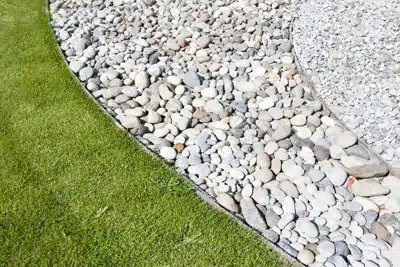
Flowers that work best in gravel and river rocks:
Sun-Loving Flowers:
- Sedum (Stonecrop):
These succulents are drought-tolerant and come in various colors, adding texture and interest. - Lavender (Lavandula):
Known for its fragrant purple flowers, lavender thrives in well-drained, rocky soil. - Gaillardia (Blanket Flower):
These bright, daisy-like flowers are drought-resistant and do well in gravel gardens. - Coreopsis:
With cheerful yellow blooms, coreopsis is hardy and perfect for sunny, rocky areas. - Yarrow (Achillea):
Yarrow’s clusters of tiny flowers come in various colors and attract pollinators.
Ground Covers:
- Thyme:
Creeping thyme is a low-growing herb. It produces small flowers and is excellent for filling gaps in gravel areas. - Ice Plant (Delosperma):
Known for its vibrant, daisy-like flowers, the ice plant is a succulent that thrives in rocky soil. - Creeping Jenny (Lysimachia nummularia):
This is a low-growing plant with yellow flowers. It spreads quickly and adds color to gravel areas.
Shade-Loving Flowers:
- Hosta:
Hosta is known for its attractive foliage and shade tolerance. They add lush greenery to gravel areas. - Astilbe:
The feathery-plumed flowers thrive in partial to full shade. They add color to shaded rocky regions. - Heuchera (Coral Bells):
Enjoy colorful foliage and small flowers. Coral bells do well in shaded, well-drained areas.
Partial Sun/Partial Shade Flowers:
- Columbine (Aquilegia):
These flowers come in various colors. They are well-suited for areas with partial sun and rocky soil. - Penstemon:
Penstemons have tubular flowers that attract hummingbirds and thrive in well-drained, gravelly soil. - Salvia:
Salvias are hardy and drought-tolerant. They come in various colors, making them perfect for partial sun.
How do you Apply Gravel and river Rocks Around Your House?
General Tips:
- Soil Preparation: Ensure the soil beneath the gravel or river rocks is well-draining. If necessary, amend with sand or gravel.
- Mulching: Use a layer of landscape fabric beneath the gravel. It helps prevent weeds while allowing water to reach the roots.
- Planting: Dig a hole about 1.5 times larger than the plant’s root ball. Place the plant in the hole. Backfill with soil mixed with gravel for better drainage.
- Watering: Although many of these plants are drought-tolerant, ensuring they receive adequate water during establishment is still important.
Following these steps, you can apply gravel and river rocks around your house. This will create an attractive, healthy landscape, and your garden will help protect your home’s foundation.


